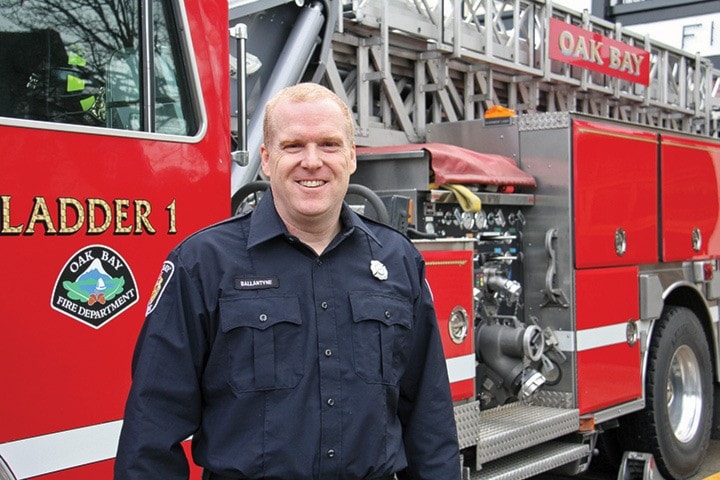Oak Bay Firefighter John Ballantyne will bring home at least one fire story when he returns from Peru later this month.
Last week he found himself teaching in the the second biggest city in Peru, Arequipa.
“Everything is on the fly and you have to be adaptable,” he said in an email. “I have been teaching in Arequipa, for the last three days. Arequipa is in the southern Highlands of Peru at about 7,500 ft. in the shadow of three volcanoes. The largest one looms over town at 19,000 ft. If that baby goes all is lost down here. Beautiful setting though.”
Firefighters Without Borders Canada is a group of volunteer firefighters, professionals and civilians from all over Canada and the US. The Vancouver-based non-profit offers support to emergency service organizations in countries with a demonstrated need by donating equipment and training. The goal is to provide a “helping hand up.”
Ballantyne is part of a crew of 13 from around North America who flew out this month to train firefighters. He’s working alongside Nick Gonzalez-Pomo from San Rafael, California and Fire Commissioner Larry Luckham, also of San Rafael.
“Classes have gone well we have had 20 to 30 students each day,” he wrote. “The most rewarding class was one that we did on the fly and changed our plans when we did not have the facilities for our original plan. We taught them how to use their new SCOTT 4500 SCBA. Pretty familiar right.
Peru bought 20 or so new Spartan engines that came fully specked including SCOTT packs similar to ours including dual (Emergency Breathing Support System). Unfortunately nobody trains with air packs because it is difficult to fill bottles so the only experience people get is when they use them in fires. During a classroom session the two packs we used to show the class the features had air leaks due to loose connections or blown O rings. We stressed daily inspections.”
The instructors witnessed the firefighters use the air packs working a fire the next day.
Near the end of an auto extrication class – without an actual vehicle to work on – an alarm came in for a confirmed structure fire.
“Quickly we lost our class and we eventually took a cab down to the fire once we secured our equipment,” Ballantyne wrote.
The fire was in two buildings storing empty 45-gallon drums and five-gallon pails of metal and plastic.
“About 70 (firefighters) showed up with apparatus from all over the world. The riot police showed up for crowd control with tear gas, automatic weapons, riot shields and two water cannon trucks, one with two turrets. The riot police were just a precaution.
“The warehouse was emptied into the street, 200 barrels were emptied into the street, many of them compromised by the fire. Two of the barrels had paint thinner or something similar in them which caused issues to say the least. Foam would have come in handy.”
The fire provided first-hand knowledge and fodder for the final day of class in Arequipa.
“At the end 70 firefighters were lined up. I thought they were going to do a post-incident analysis but it was just a dismissal with a big ‘Viva Peru!’”, he wrote. “Tonight is our last class in Arequipa and we are teaching incident command and introducing command boards. Lots of fresh examples to use.”
Ballantyne returns from Peru March 20.
